|
|
|
Sort Order |
|
|
|
Items / Page
|
|
|
|
|
|
|
| Srl | Item |
| 1 |
ID:
132165
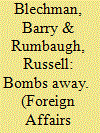

|
|
|
|
|
| Publication |
2014.
|
| Summary/Abstract |
In 1991, U.S. President George H. W. Bush decided to retire almost all the tactical nuclear weapons operated by the U.S. Army and the U.S. Navy. His reasons were simple: these short-range weapons were militarily useless and imposed significant burdens on the armed forces in terms of money, manpower, and time. Twenty-three years later, only one type of tactical nuclear weapon remains in the U.S. inventory: the B-61 gravity bomb. In addition to the several hundred B-61s located at home, the United States currently deploys around 180 of them in Europe, at bases in Belgium, Germany, Italy, the Netherlands, and Turkey. In the event of a nuclear conflict on the continent, NATO would deliver the bombs via U.S.-built F-15 or F-16 aircraft or European-built Tornado fighters, operated by some combination of Belgian, Dutch, German, Italian, and U.S. crews. Originally intended to prevent Soviet forces from penetrating Western Europe, the planes could travel as far east as Russia. But owing to their slower speed and lower altitude, they would be much more vulnerable to Russia's ground-based air defenses than would longer-range strategic bombers and missiles.
|
|
|
|
|
|
|
|
|
|
|
|
|
|
|
|
| 2 |
ID:
057444
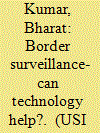

|
|
|
| 3 |
ID:
061369
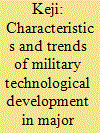

|
|
|
| 4 |
ID:
132251
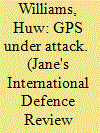

|
|
|
|
|
| Publication |
2014.
|
| Summary/Abstract |
As GPS is central to the performance of many unmanned systems, protecting them from electronic attack, is a growing concern. Huw Williams examines some of the defensive measures and alternative methods of operations
|
|
|
|
|
|
|
|
|
|
|
|
|
|
|
|
| 5 |
ID:
132240
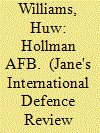

|
|
|
|
|
| Publication |
2014.
|
| Summary/Abstract |
Arguably, no other piece of military hardware is as synonymous with the conflict in Afghanistan as the unmanned aircraft system (UAS). General Atomic Aeronautics Systems (MQ-1) predator and MQ-9 reaper platforms are regularly presented as the face of UAS operations lauded and reviled in equal measure for the capabilities they bring to the modern battlefield.
|
|
|
|
|
|
|
|
|
|
|
|
|
|
|
|
| 6 |
ID:
132331
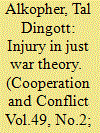

|
|
|
|
|
| Publication |
2014.
|
| Summary/Abstract |
The paper traces the evolution of just war discourse and its historicity. Taking St Augustine's crucial definition of just war as a war to avenge injuries as our starting point, we focus on the concept of injury in 'just war' discourse. The genealogy of the notion of injury is traced through the continuities, ruptures, and leaps in the evolution of its meaning, starting from the conceptualization of just war in medieval thinking to its manifestation in feminist thought. It specifically explores two aspects of the way injury is conceptualized: the meaning ascribed to the actual concept of injury and, secondly, the constructed appropriate reaction to injury. In conclusion, we assess how far injury is indeed socially constructed and try to determine the impact of its socially constructed meaning on just war thinking and possibly warlike practices.
|
|
|
|
|
|
|
|
|
|
|
|
|
|
|
|
| 7 |
ID:
131721
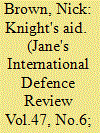

|
|
|
|
|
| Publication |
2014.
|
| Summary/Abstract |
Thalas, Netherland is set to reveal a new capability upgrade package for the squire battlefield radar at the 2014 Eurostory defence exhibition in Paris in June.
|
|
|
|
|
|
|
|
|
|
|
|
|
|
|
|
| 8 |
ID:
130109


|
|
|
|
|
| Publication |
2014.
|
| Summary/Abstract |
So many sensors now populate the battlefield that there is almost no portion of the electromagnetic spectrum unexploited by imaging devices operating in the visual, near IR, short, medium and long wave IR, and even ultraviolet wavebands. IR sensors, however, are now so widespread that managing thermal signatures has become as important as visual camouflage. As with stealth at sea and in the air, however, benefits are generally analogue rather than digital - people and things are not either visible or invisible, rather they are more or less visible at varying ranges. This means that small improvements in signature management can give the side that possesses them a significant advantage.
|
|
|
|
|
|
|
|
|
|
|
|
|
|
|
|
| 9 |
ID:
130658
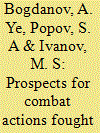

|
|
|
|
|
| Publication |
2014.
|
| Summary/Abstract |
The article discusses network centrics technologies and their application to warfare which would integrate all forces sand weapons in a common information environment in combat. Topics discussed include the origins of the concept of network-centric warfare, the assessment of a hypothetical adversary capable of network-centric technologies, and trends in common information environment during warfare
|
|
|
|
|
|
|
|
|
|
|
|
|
|
|
|
| 10 |
ID:
104701


|
|
|
| 11 |
ID:
130881
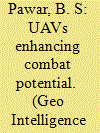

|
|
|
|
|
| Publication |
2014.
|
| Summary/Abstract |
Information is an element of combat power and a combat multiplier in the hands of a commander. Field commanders require an organic, responsive, economically viable, multi- source, long endurance, near real-time reconnaissance capability to collect, process and report intelligence throughout the level of conflict. Additionally, commanders need ability to obtain data from anywhere within enemy territory, day and night (24x7), regardless of weather. The answer lies in the use of UAVs, with their inherent characteristics to provide the flexibility to operate in the extended battle space, thereby enabling the ground forces to see first, understand first, act first and finish decisively. UAVs are remotely piloted or self piloted aircraft that can carry cameras, sensors, communication equipment or other payloads. They have been used in the reconnaissance and intelligence gathering role from 1950s; and more challenging roles are envisaged including combat missions. Unmanned vehicles are not impeded by restraints imposed on manned systems, where both the aircraft and crew could be lost. In fact, they are increasingly being employed for missions that were hitherto the domain of manned aircraft. The UAVs today are also providing exclusive capability to forces engaged in sub-conventional operations, especially in the global war on terrorism - in Afghanistan and Pakistan.
|
|
|
|
|
|
|
|
|
|
|
|
|
|
|
|
|
|
|
|
|